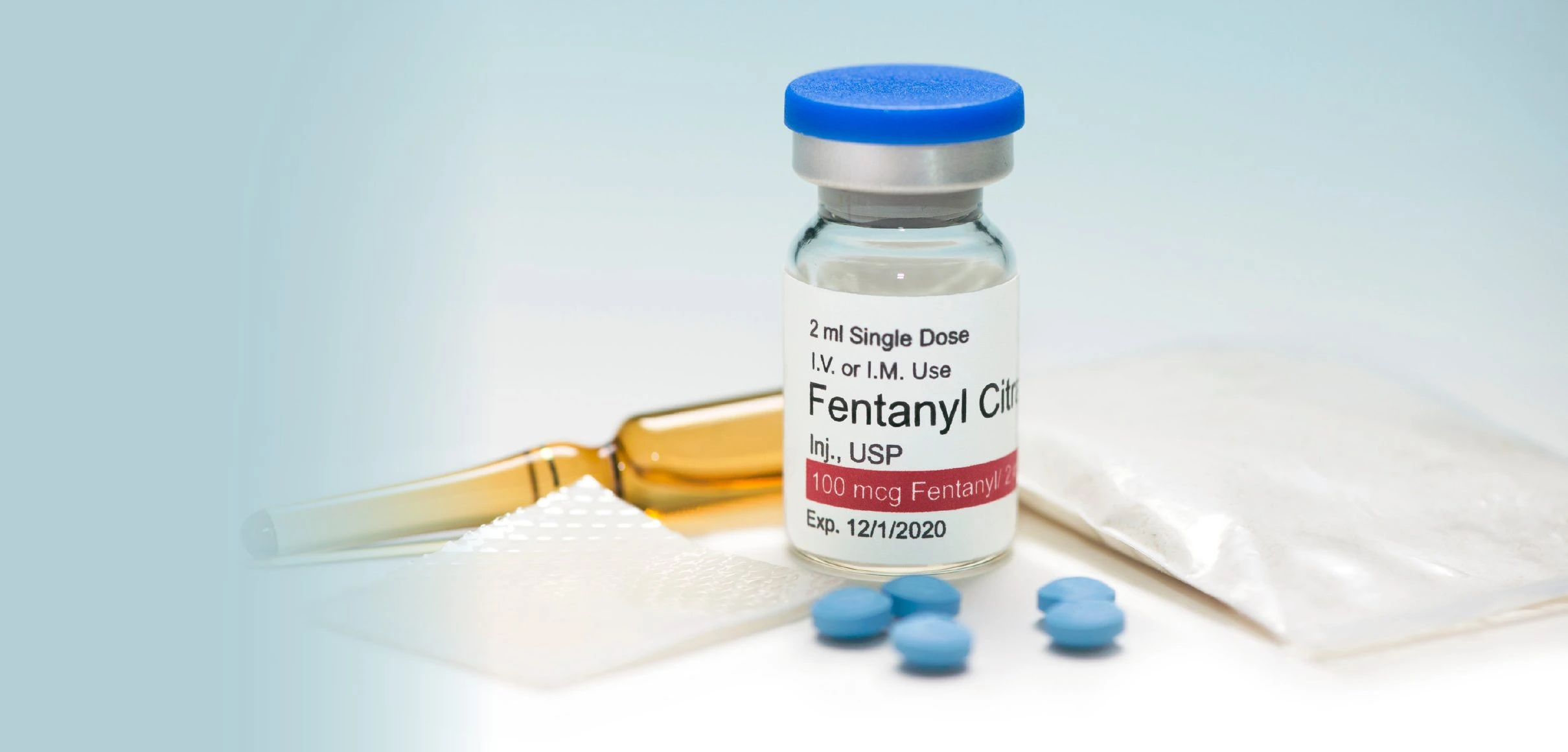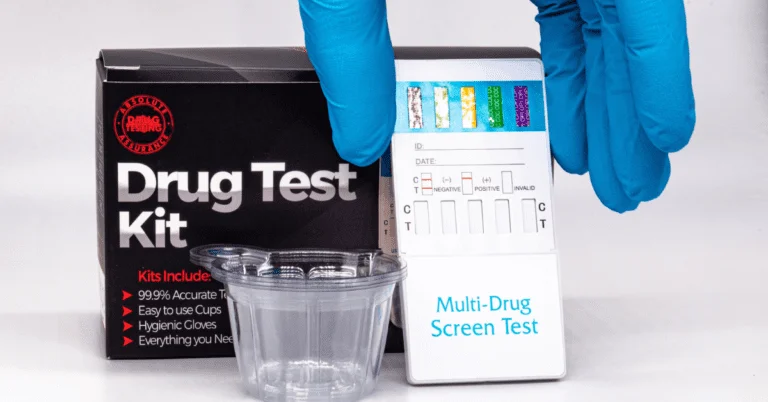Fentanyl Withdrawal
Fentanyl is an extremely potent and addictive opioid drug prescribed for the treatment of severe pain that cannot be managed by weaker prescription opioids. It is also made illegally in labs and sold on the street and added to illicit drugs like heroin, cocaine, and MDMA.

Chronic fentanyl use can lead to a physiological dependence, which means your body has adapted to the presence of the opioid. If you are dependent on fentanyl and suddenly stop using it, you’ll experience fentanyl withdrawal symptoms, which range from unpleasant to extremely distressing. However, a medical detox program can help manage your symptoms and ensure your comfort during the detox process.
Fentanyl Withdrawal Symptoms
Once you are dependent on fentanyl, you will need to continue taking fentanyl or another opioid to stave off uncomfortable withdrawal symptoms. Fentanyl withdrawal symptoms can be so distressing that it may be difficult to quit using this opioid on your own. Fortunately, medical detox programs can help alleviate fentanyl withdrawal symptoms, such as:
- Sleep disturbances
- Nausea, vomiting, diarrhea
- Cold flashes
- Goose bumps
- Bone and muscle pain
- Uncontrollable leg movements
- Severe fentanyl cravings
- Anxiety
- Agitation
- Teary eyes and runny nose
- Excessive sweating
- Yawning
- Dilated pupils
If you are taking fentanyl for a legitimate medical reason, you will likely still develop a physiological dependence on this medication. That doesn’t mean that you are addicted. It just means your body has adapted to fentanyl and that when it’s time to stop taking it, you will have to discuss a tapering schedule with your doctor. Gradually weaning you off fentanyl will mitigate the withdrawal symptoms.
On the other hand, if you abuse or misuse fentanyl by taking it without a prescription, mixing it with other substances, or snorting or injecting it, you will develop a dependence much more rapidly than someone taking it medically. Plus, your dependence will likely be much more severe, leading to severe fentanyl withdrawal symptoms.
Fentanyl Withdrawal Timeline
The fentanyl withdrawal timeline depends on whether you are using a long-acting or short-acting version of fentanyl. This is because the onset, severity, and duration of fentanyl withdrawal symptoms is related to how long fentanyl stays in your system, or the drug’s half-life—how long it takes for the opioid to be reduced by 50% in your body.
The fentanyl patch, which is prescribed for around-the-clock pain or severe cancer pain, is extremely long-acting and slowly releases the medication into your body. Even after removing the fentanyl patch, your skin will still continue to absorb the opioid. As such, it may take about 17 hours for the fentanyl blood levels to cut in half.
This will delay the onset of fentanyl withdrawal symptoms significantly. If you are addicted to or dependent on a fentanyl patch, your timeline may resemble below:
- Fentanyl withdrawal symptoms appear within 12-48 hours after last use.
- Fentanyl withdrawal symptoms slowly resolve over a period of 10-20 days.
Conversely, if you’re addicted to a short-acting version of fentanyl, such as the type sold on the street, your fentanyl withdrawal timeline will be much shorter. Here is an example of a fentanyl withdrawal timeline for short-acting fentanyl:
- Fentanyl withdrawal symptoms emerge within 6-12 hours after last use.
- Symptoms peak in severity within 1-3 days.
- Withdrawal symptoms gradually lessen and resolve within 5-7 days.
Post-Acute Withdrawal Syndrome
Once you go through acute fentanyl withdrawal, you may still notice nagging withdrawal symptoms that last for weeks or months. These are called post-acute withdrawal symptoms or protracted withdrawal symptoms and they can be very distressing and increase the risk of relapse.
An estimated 90% of people recovering from opioid addiction will experience post-acute withdrawal symptoms at some point.
Common fentanyl post-acute withdrawal symptoms may include:
- Anxiety
- Panic attacks
- Irritability
- Depression
- Learning, memory, and problem-solving impairments
- Fentanyl cravings
- Sleep problems
The frustrating thing about post-acute fentanyl withdrawal syndrome is that the symptoms don’t have a predictable timeline—rather, protracted withdrawal symptoms may fluctuate. Sometimes they are triggered by a stressful event or situation, but other times they have no discernible cause.
If you are in recovery from fentanyl addiction and are experiencing post-acute withdrawal symptoms, don’t hesitate to reach out for extra support. This may include attending additional NA meetings, finding a therapist, scheduling extra therapy sessions, or reaching out to your sponsor.
Are Fentanyl Withdrawal Symptoms Dangerous?
Typically, fentanyl withdrawal symptoms are not potentially fatal, although they can be extremely painful and difficult to endure.
However, fentanyl withdrawal syndrome can lead to some dangerous complications, such as:
- Severe diarrhea and vomiting can cause severe electrolyte disturbances and dehydration.
- Vomiting and inhaling stomach contents into lungs can cause a lung infection and be life-threatening.
Risk of Overdose After Withdrawal
The most significant risk associated with fentanyl withdrawal is the increased chance of experiencing an overdose after withdrawal, detox, or a period of abstinence. This is because going through fentanyl withdrawal lowers your tolerance, meaning you will need less fentanyl to get high. When your tolerance is reduced, you are no longer accustomed to the amount you were regularly using. As a result, relapsing and returning to your typical dose of fentanyl can increase the likelihood of overdosing on fentanyl.
Most opioid-related overdose fatalities occur in people who have just gone through detox. But this doesn’t mean that you shouldn’t seek out a professional detox program—it simply means that once you complete detox, you should transition into a fentanyl addiction treatment program where you can build coping skills and relapse prevention strategies to help you stay sober in the long run.
Due to this overdose risk, it’s vital to always keep naloxone (Narcan) on you. Narcan is an opioid overdose medication that rapidly reverses the respiratory depression associated with an opioid overdose. Depending on where you live, you may be able to buy Narcan without a prescription at pharmacies like Walgreens and CVS. Otherwise, ask your doctor for a prescription.
Find Detox Treatment for Fentanyl Withdrawal
If you are struggling with a fentanyl addiction, a medical detox program is the safest setting for you to withdraw in. You never want to try to detox at home due to the risk of complications. At a fentanyl detox program, you will receive 24/7 medical supervision, oversight, and care to minimize your withdrawal symptoms and help you achieve medical stabilization.
Medical detox programs utilize a combination of opioid withdrawal medications and symptomatic medications to ensure your comfort and safety. These medications may include:
- Buprenorphine: A partial opioid agonist that relieves withdrawal symptoms and cravings without causing a high; the ceiling effect increases the safety profile and reduces the risk of overdose if someone tries to misuse it.
- Methadone: A full opioid agonist that alleviates cravings and symptoms without producing euphoria.
- Clonidine: Medication that may manage high blood pressure and rapid heart rate.
- Promethazine: Medication that may alleviate nausea and vomiting.
- Loperamide: Medication that may manage and treat diarrhea.
Call our confidential helpline at (800) 429-7690 to speak to a compassionate rehab support specialist about finding a medical detox program. They will help you find the right program for you.








